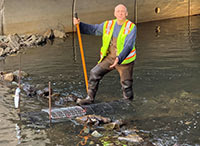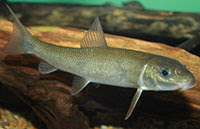Dear UESiders,
Amazing how disciplined UESiders are being… Staying in unless something essential needs doing in the outside world… By far the majority with masks… Patient and keeping the correct distance when waiting on line…
Keep it up, people!!
The Week in Virtual/Tele Town Halls:
Tuesday, April 21st, 7pm – Hosted by AM Seawright, the topic this time out being “Cyber Security & Scam Prevention” with special guests from Ernst & Young and community member Alex Bores, a cybersecurity specialist at Merlon Intelligence. Join on your computer via http://zoom.us/j/131837787 or by calling 646-558-8656 and entering Meeting ID: 131 837 787#, then press # again to join the call.
Thursday, April 23rd, 7pm — The first of two, hosted by State Senator Krueger, entitled “Chasing COVID: Understanding the Effect of the Virus on Public Health with guest expert Dr. Denis Nash, Distinguished Professor of Epidemiology, Executive Director CUNY Institute for Implementation Science and Population Health. (Part 2 will address “Taking Care of Your Own and Your Family’s Health”.) To register… And to access the event…
The latest COVID updates from our electeds:
CM Kallos… State Senator Krueger…
As ever, some tidbits of activism:
No relenting on opposition to the proposed Williams Pipeline…
The Commissioner of the NYS DEC weighs in on the loosening of EPA regulations…
Bring on the miscellaneous distractions:
Many a bee in the new Carl Schurz Park Notes…
The Times takes us beyond our four walls with a ton of travel-centric podcasts…
And to a smog-free Los Angeles has cleared, snow-capped Himalayas that’re visible from parts of Northern India for the first time in residents’ memories. That while, seismologists are reporting that the upper crust of the Earth has quieted.
Best instructions yet – complete with pattern – on making a mask…
Of course, NYS Conservation Officers are practicing social distancing while on the job… (Are they ever saving lots of birds!!)
Plenty of rescues – folks seeking solace, we bet – on our NYS Forest Rangers’ plates…
FYI, toilet paper’s made from – at least in part – recycled paper which is now, thanks to COVID, in increasingly short supply…
And for the kids:
The annual New York Recycles Poster Contest is on… (scroll down and, as you do, note composting is ongoing elsewhere in NYS!!)
Animal time:
The LA Times on a Yosemite reclaimed by critters…
Meanwhile, wild boars have descended on Barcelona. The Welsh town of Llandudno belongs to the goats now.
From the Hudson River Almanac:
(Who knew the’s an ongoing effort to re-establish the alewife – name of one of our summer farms, yes, but also a NY fish – in the Bronx River!!)
4/10 – Bronx, New York City: I’ve been trying to verify alewife (Alosa pseudoharengus) presence this spring in the Hutchinson River near Mt. Vernon. These are river herring in from the sea to spawn. So far, using a basket trap with a double funnel facing downstream, I have trapped only a single female (266 mm) a half-mile upstream from tidewater just below the Pelham Lake Dam. – Gareth Hougham

Gareth Hougham searching
[The Hutchinson River is a small Westchester stream that just makes it to the Bronx and then becomes an estuary that flows into Eastchester Bay in Western Long Island Sound. The Hutchinson River is relevant to the Hudson River as it is biologically connected to the watershed by way of the East River. Their alewives are essentially our alewives. This catch may be the first in a very long time. Forty years ago, I spotted alewives at the head of the estuary, but I am not aware of any since. John Waldman]
New York City Parks has stocked adult alewives in the Bronx River, a sister estuarine watershed to the Hutchinson, annually since 2017. The alewives are transported from Brides Brook in Connecticut by staff from the Connecticut Department of Energy and Environmental Protection.
The stocking effort is a partnership with New York City Parks, Connecticut Department of Energy and Environmental Protection, the Wildlife Conservation Society, and the Bronx River Alliance. The goal is to jump-start a native population that will be able to use an engineered fishway, installed at the downstream East 182nd Street dam in 2015, to migrate to upstream spawning grounds.
The concept is that the adult alewives may not return to the Bronx River, but that their young-of-year will have imprinted on the place where they were born and will return to their natal stream when sexually mature in 3-5 years. – Katie Friedman]
Then there’s the Fish of the Week:
Fish-of-the-Week for Week 66 is the white sucker (Catostomus commersoni) number 68 (of 230) on our watershed list of fishes.

A White Sucker
The white sucker, a freshwater species, is one of seven members of its family (Catostomidae) in the watershed. Four are native, including the white sucker, and three are canal immigrants from the Great Lakes.
Suckers, in general, are elongate and terete in cross-section. They have what ichthyologists refer to as an “inferior mouth,” in that it is angled downward. This adaptation allows suckers to efficiently feed off the bottom where they find a broad variety of insect larvae and small invertebrates such as amphipods. With a snorkel mask you can watch them inhale a mouthful of bottom sand and sediment, sort out the edibles, and then exhale the rest.
In spring, adult male white suckers have a broad red stripe (breeding colors) on each side of its body and many tiny bumps (breeding tubercles) on its anal fin and caudal (tail) fin. Breeding tubercles are thought to aid the males in maintaining contact with females. From Colonial times through the mid-20th century, there was a cottage industry in the Hudson Valley for smoking and pickling white suckers. They are a delightful fish! – Tom Lake
Completing your census form is so green,
UGS
